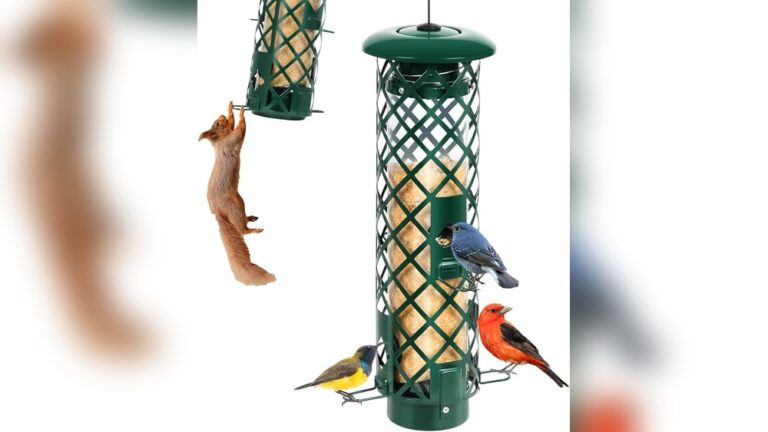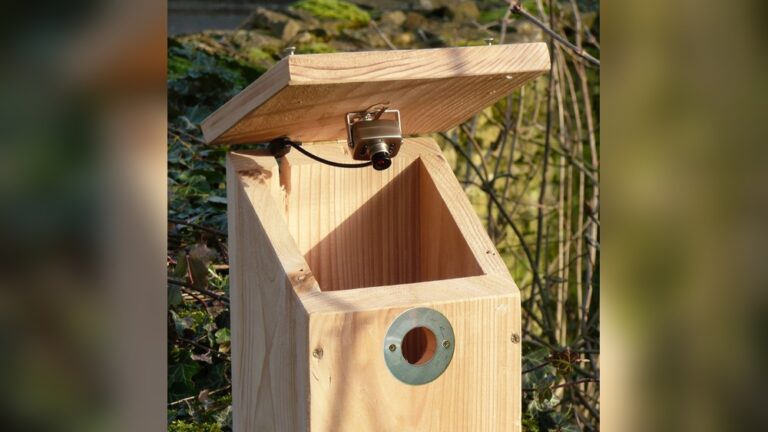Exploring Woodpecker Behavior
Have you ever wondered why woodpeckers keep tapping on trees with such force and rhythm? Their behavior is more fascinating than it seems at first glance.
Understanding how and why woodpeckers act the way they do can change the way you see these birds forever. You’ll discover surprising facts about their unique habits, how they communicate, and what makes them true masters of survival. Keep reading to unlock the secrets behind woodpecker behavior—you won’t want to miss these insights that can turn your next outdoor experience into something extraordinary.
Woodpecker Species
Woodpeckers are fascinating birds known for their unique pecking behavior. They belong to the family Picidae and include many species. Each species has special features and habits. Understanding these species helps us learn more about their role in nature.
Common Types
Several woodpecker species are common across different regions. The Downy Woodpecker is small with a white belly and black wings. The Hairy Woodpecker is similar but larger and has a longer bill. The Pileated Woodpecker is big with a bright red crest on its head. The Red-headed Woodpecker stands out with a completely red head. Each type has unique calls and behaviors that make them easy to identify.
Habitat Differences
Woodpecker species live in various habitats. Some prefer dense forests with tall trees. Others thrive in open woodlands or parks. The Downy Woodpecker often lives in suburban areas with scattered trees. The Pileated Woodpecker needs large forests with old trees for nesting. Habitat choice affects their feeding and breeding habits. Knowing these differences helps protect their environments and supports their survival.

Credit: birdallianceoregon.org
Drumming And Pecking
Woodpeckers are known for their unique drumming and pecking behavior. These actions are essential for their survival and daily activities. Drumming and pecking serve different purposes in the woodpecker’s life. They help with communication and finding food. Understanding these behaviors reveals how woodpeckers interact with their environment.
Communication Signals
Woodpeckers use drumming to send messages to other birds. The sound comes from rapid pecks on trees or other surfaces. Each species has its own drumming pattern. This pattern tells others about territory or presence. Drumming can also attract a mate during breeding season. It works like a loud, clear signal in the forest. The rhythm and speed are important in these signals. Other woodpeckers listen closely to recognize neighbors or rivals.
Foraging Techniques
Woodpeckers peck to find food hidden inside trees. They tap the bark to detect insects moving beneath. Once they find prey, they peck harder to reach it. Their strong beaks and neck muscles help break wood. They also use their long tongues to catch insects deep inside holes. Pecking helps woodpeckers access a steady food supply. This technique works well in many types of forests. It also helps control insect populations harmful to trees.
Feeding Habits
Woodpeckers have unique feeding habits that help them survive in many environments. Their strong beaks and quick movements allow them to find food hidden under tree bark. These birds use their tongues and sharp claws to catch insects and gather other foods. Understanding their diet and food storage habits reveals much about their behavior and role in nature.
Diet Composition
Woodpeckers mainly eat insects, like ants and beetles. They use their beaks to drill into wood and reach these bugs. Some species also eat fruits, nuts, and tree sap. The diet changes with seasons and available food. In winter, they rely more on seeds and nuts. Their flexible diet helps them survive in different places.
Food Storage
Many woodpeckers store food for later use. They create small holes in tree bark to hide nuts and seeds. This behavior is called caching. It helps them find food during scarce times. Some woodpeckers check these storage spots regularly. This smart habit improves their chances of survival in tough seasons.

Credit: www.amazon.com
Nesting Behavior
Woodpeckers show unique nesting behavior that helps them survive and raise their young. Their nests offer safety from predators and harsh weather. These birds create homes by digging into trees, a skill they use every breeding season. Understanding their nesting habits reveals much about their life and environment.
Cavity Excavation
Woodpeckers carve out nest cavities in tree trunks or branches. They use their strong beaks to chip away wood. This process can take several days to weeks. The cavity provides a warm, secure place for eggs and chicks. Woodpeckers often choose dead or soft wood for easier digging. The hole size depends on the species and their needs.
Breeding Patterns
Woodpecker breeding seasons vary by region and species. Most lay eggs once a year during spring or early summer. The female usually lays 3 to 7 eggs. Both parents take turns incubating the eggs and feeding the chicks. Young birds stay in the nest until they can fly. This shared care increases the survival rate of the young.
Territoriality
Woodpeckers are known for their strong sense of territory. Each bird claims a specific area to find food and raise young. They protect this space with clear signals and actions. Understanding their territorial behavior helps us see how they survive and thrive.
Marking Territory
Woodpeckers mark their territory by drumming on trees. This sound is loud and carries far. It warns other woodpeckers to stay away. They often choose hollow trees or dead branches to make drumming sounds. Visual signs like scratched bark also mark the area. These signals tell rivals that the space is taken.
Defending Against Rivals
Woodpeckers defend their territory with loud calls and quick movements. If another woodpecker enters, a fight may start. They use pecks and wing flaps to scare rivals off. Sometimes, chasing is enough to protect their space. Strong defense keeps their food and nesting area safe. Territory fights are short but intense.
Adaptations
Woodpeckers have unique adaptations that help them survive and thrive. Their bodies and senses are built for their busy lifestyle. These special features let them peck wood, find food, and avoid injury. Understanding these adaptations shows how nature shapes creatures to fit their needs.
Physical Traits
Woodpeckers have strong, chisel-like beaks. These beaks help them drill into trees to find insects. Their skulls are thick and spongy to absorb shock from pecking. They have stiff tail feathers that act like a brace. Their feet have two toes facing forward and two backward. This grip helps them cling tightly to tree trunks. Their long, sticky tongues reach deep into holes to catch prey.
Sensory Abilities
Woodpeckers have excellent hearing to detect insects inside wood. Their ears are hidden to avoid damage during pecking. Their eyes protect against flying debris with a special membrane. This membrane covers the eye like a shield when pecking. They also have sharp vision to spot predators and food from afar. These senses work together for safety and success in their environment.
Migration And Movement
Woodpeckers show interesting patterns in how they move and migrate. Understanding these movements helps us learn more about their habits and survival. Their migration and local travel vary widely depending on the species and environment. Some woodpeckers travel long distances, while others stay close to home. These movements are often linked to food availability and weather changes.
Seasonal Patterns
Many woodpeckers change locations with the seasons. Some species migrate south in cold months. They seek warmer areas where food is easier to find. Other woodpeckers stay in the same place all year. They adapt to winter by changing their diet or behavior. Seasonal movement helps woodpeckers survive harsh conditions. It also supports their breeding and feeding needs.
Local Movements
Woodpeckers often move short distances within their home range. They search for food by visiting different trees. Local movements also help them find new nesting spots. These daily travels can cover several miles. Woodpeckers adjust their routes based on food supply and safety. Their strong legs and claws make climbing and hopping easy. These small movements are crucial for their day-to-day survival.

Credit: www.amazon.com
Human Impact
Human activities affect woodpecker behavior and survival. Changes in the environment change where they live and how they find food. Understanding these impacts helps protect these birds and their habitats.
Habitat Loss
Deforestation and urban growth destroy woodpecker homes. Trees are cut down for farms, houses, and roads. Woodpeckers need old trees to nest and find insects. Without enough trees, their numbers drop quickly. Noise and pollution also disturb their daily activities.
Conservation Efforts
People work to save woodpecker habitats by planting trees and protecting forests. Laws help stop illegal logging and protect nature areas. Some projects build artificial nests for woodpeckers. Education raises awareness about the importance of these birds. Small steps can help woodpeckers thrive again.
How Smart Pets Lover Can Help You with Exploring Woodpecker Behavior
Turning Curiosity into Learning: Observing Woodpecker Behavior Up Close
Understanding woodpecker behavior—like their distinctive drumming and pecking or their fascinating nesting habits—offers more than just birdwatching pleasure. It’s a wonderful chance to connect with nature and deepen your appreciation for these remarkable birds. Whether you’re in your backyard or a local park, observing their feeding habits or territorial calls can be a gentle introduction to wildlife study.
For pet parents and animal lovers who cherish every chirp, taking notes on woodpecker adaptations or migration patterns can spark new insights into how animals thrive in changing environments. This kind of practical learning aligns perfectly with the spirit of Smart Pets Lover, where understanding each creature’s story helps us become more informed and compassionate caretakers.
- Keep a simple journal to track woodpecker visits and behaviors.
- Use binoculars to watch drumming patterns without disturbing them.
- Explore local wildlife guides to complement your observations.
For more detailed questions or sharing your woodpecker stories, reaching out to local birdwatching groups or wildlife experts can enrich your experience. Embracing these moments reminds us why every chirp truly tells a story worth knowing.
Frequently Asked Questions
What Do Woodpeckers Use Their Beaks For?
Woodpeckers use their strong beaks to drill into trees. This helps them find insects and create nesting cavities. Their beaks also serve to communicate by drumming on wood surfaces.
How Do Woodpeckers Avoid Brain Injury?
Woodpeckers have shock-absorbing skulls and spongy bone structures. Their brains are tightly secured to prevent movement during pecking. These adaptations protect them from injury during rapid pecking.
Why Do Woodpeckers Drum On Trees?
Drumming is a form of communication for woodpeckers. They use it to mark territory and attract mates. The sound also helps them establish dominance among other birds.
What Do Woodpeckers Eat Besides Insects?
Besides insects, woodpeckers eat fruits, nuts, and tree sap. Their diet varies by species and habitat. This diverse diet helps them survive in different environments.
Conclusion
Woodpeckers show fascinating and unique behaviors every day. Their drumming helps them find food and talk to others. Watching these birds teaches us about nature’s clever ways. They play an important role in forests and gardens. Understanding woodpeckers deepens our love for wildlife.
Keep observing, and you’ll notice their special habits. Nature always has surprises waiting to be found.







